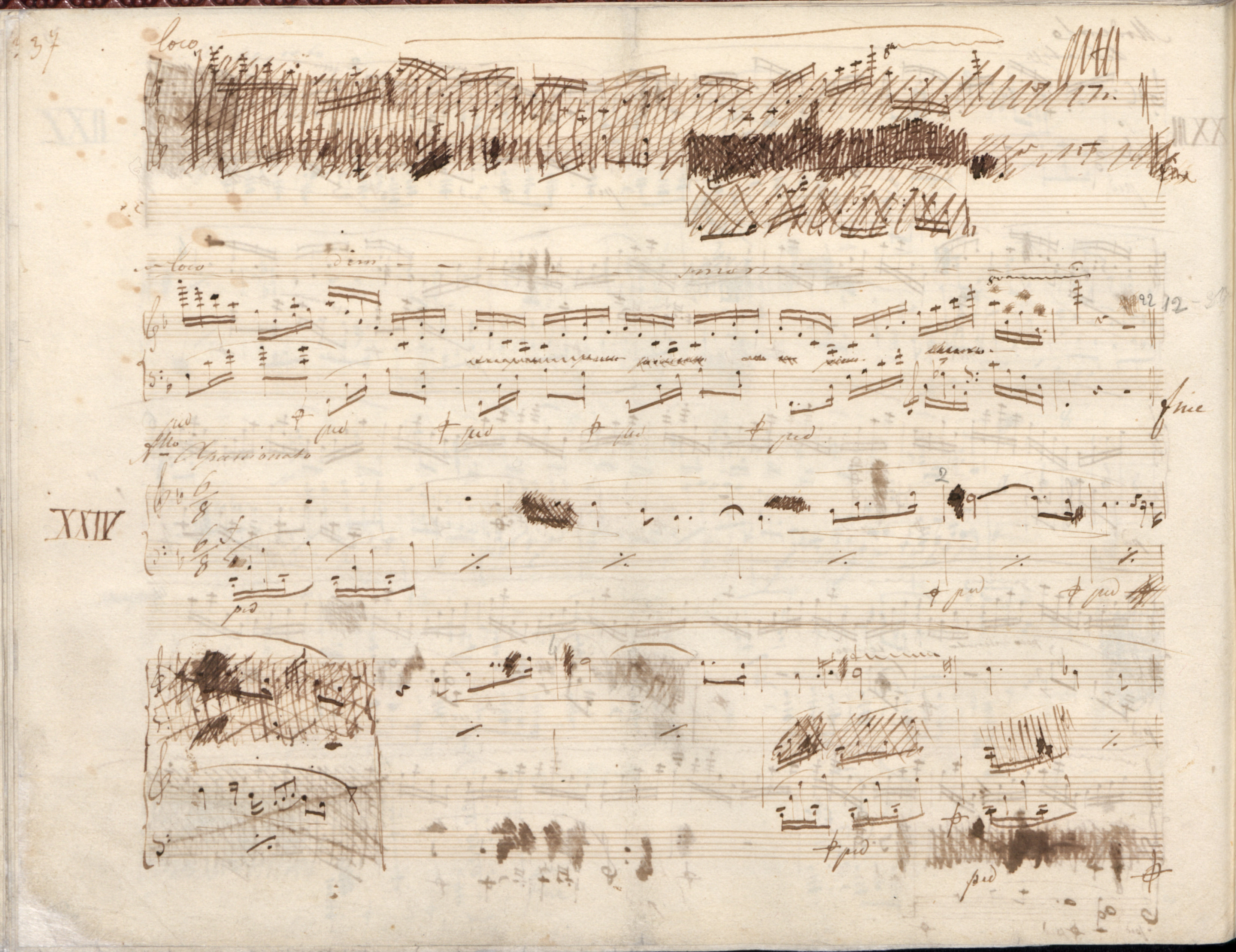Op. 2, Variations in B♭ major
Op. 10, 12 Etudes
Op. 11, Concerto in E minor
Op. 21, Concerto in F minor
Op. 22, Polonaise in E♭ major
Op. 24, 4 Mazurkas
Op. 25, 12 Etudes
Op. 26, 2 Polonaises
Op. 27, 2 Nocturnes
Op. 28, 24 Preludes
Op. 30, 4 Mazurkas
Op. 35, Sonata in B♭ minor
Op. 50, 3 Mazurkas
Op. 63, 3 Mazurkas
Op. 64, 3 Waltzes
(Op. 4), Sonata in C minor




Op. 28 No. 23, Prelude in F major
In order for the notes on the ledger line to be visible, Chopin would make their noteheads look like short, vertical dashes, and not round dots, as it is on the stave. The bottom part of such a dash could be quite long, which confused the interpreters a few times, who would see it as an additional crotchet stem. The fifth semiquaver in each of these bars illustrates this phenomenon well. Cf., e.g. the Mazurka in B Minor, Op. 24 No. 4, b. 23.
Minor, Op. 24 No. 4, b. 23.
Compare the passage in the sources »
category imprint: Source & stylistic information
issues: Uncertain notes on ledger lines
notation: Rhythm

